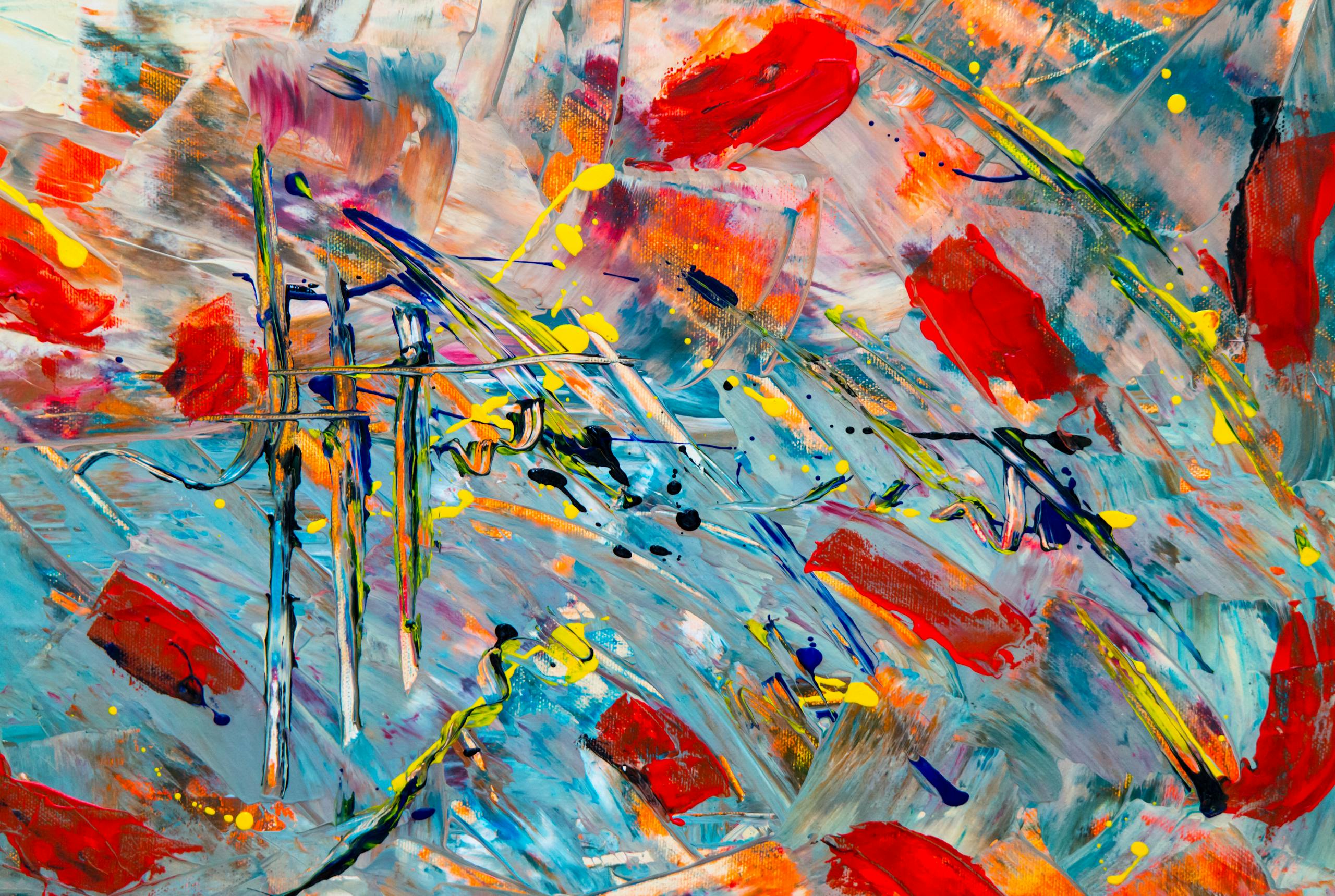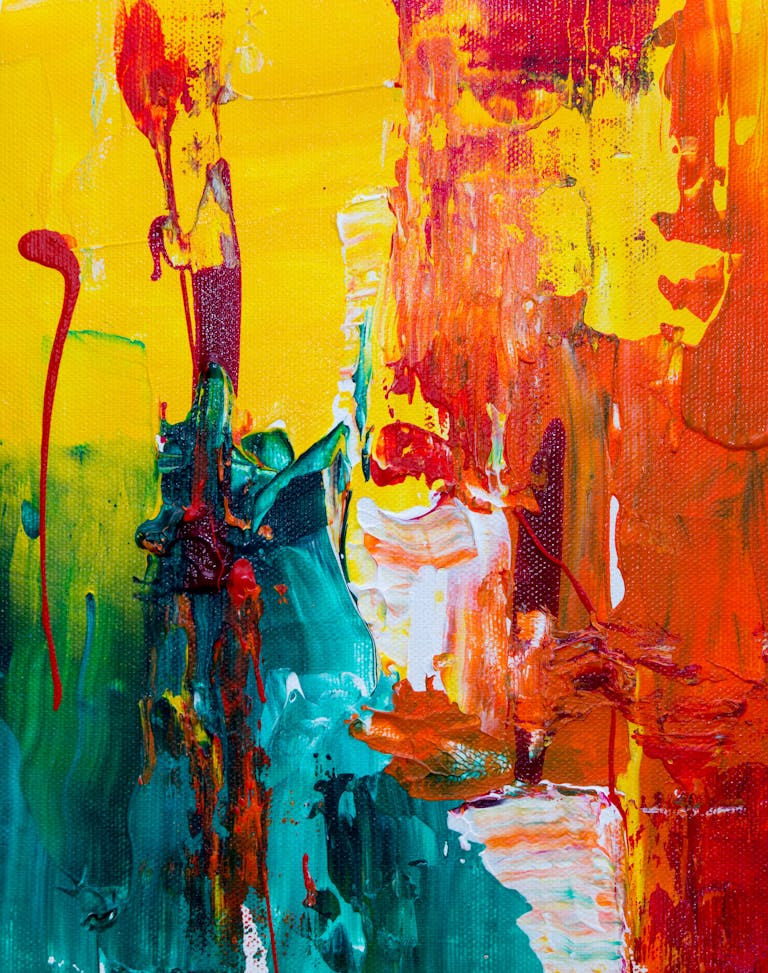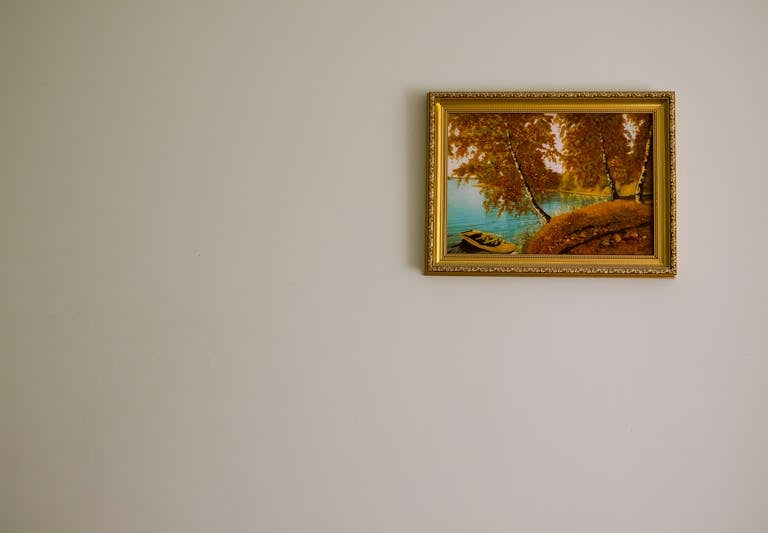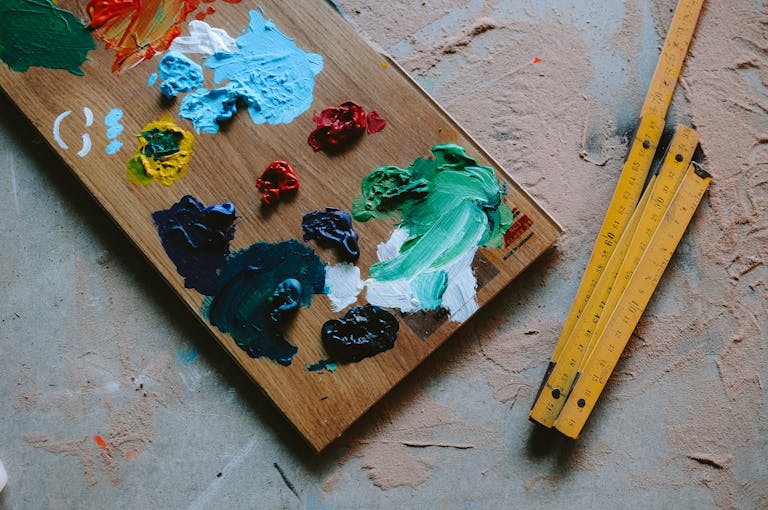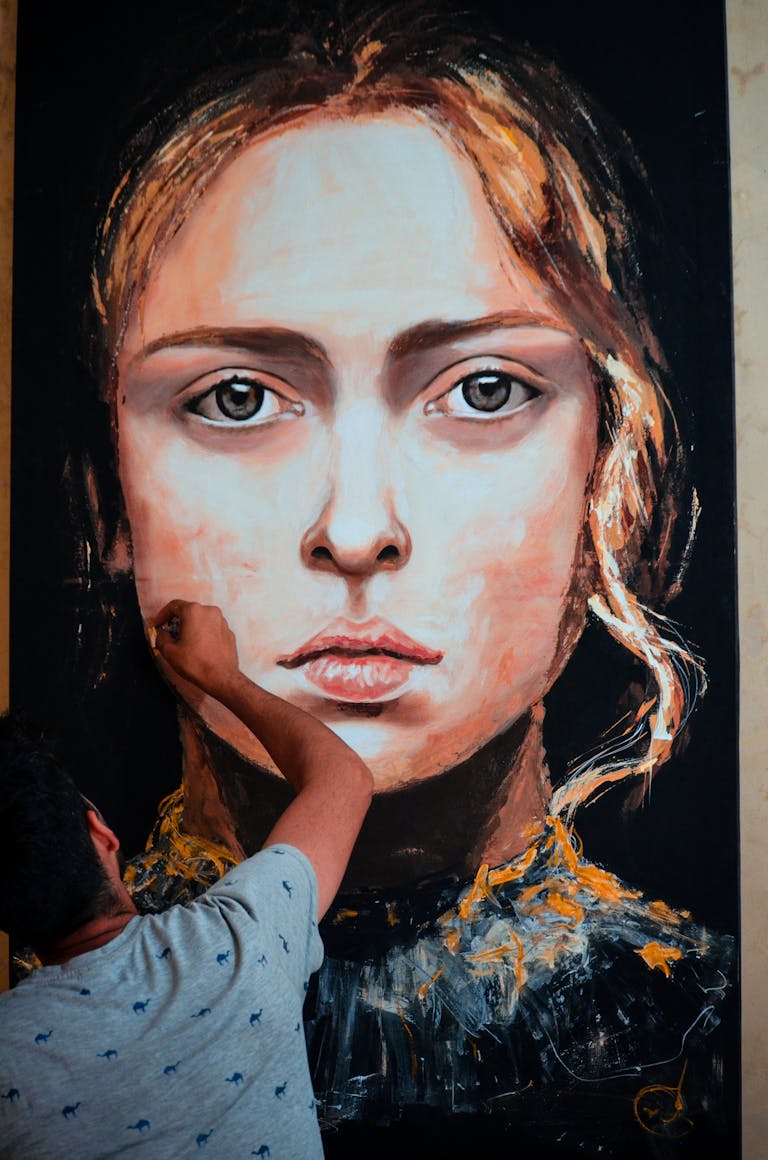Professional vs Student Acrylic Paints: Complete Quality and Value Comparison Guide
Professional vs Student Acrylic Paints
Have you ever stood in the art store, staring at all those paint tubes? You’re not alone! Let’s talk about the two main types of acrylic paint – student and fancy professional. Think of it like coffee. Student paint is like regular coffee from the corner store; it does the job while keeping your wallet happy. Professional paint is more like those unique coffee beans that cost more but give you fantastic flavor.
The most significant difference is in the color power. Pro paints are packed with more color – like adding three squirts of chocolate syrup to your milk instead of just one. This means your paintings will have brighter, stronger colors that pop off the canvas. Student paints work just fine when you’re learning and cost way less. They come in basic colors that mix well, perfect for practicing your art.
Pro paints are different. They have super strong colors, and a little bit goes a long way. The colors stay bright longer on your canvas, too. But here’s a brilliant tip: start with student paint while learning. You can always treat yourself to one or two pro colors for unique parts of your painting – like using the fancy chocolate only on top of your cake!
Remember, even famous artists started with basic supplies. Every artist’s journey begins somewhere; the most important thing is just getting started. Pick what feels right for your wallet and your art dreams. The joy of creating is what matters most, not the price tag on your paint tubes.

Understanding Paint Grades: Professional vs Student-Grade Basics
Let me tell you about my adventures with different kinds of paint! I’ve made some funny mistakes, but I’ve also found some fantastic things along the way.
I’ll never forget my first time using professional paint. I had been using basic paint for years when I decided to buy a tube of special red paint. When I squeezed it out, I couldn’t believe my eyes! The color was so intense that I used way too much. My painting looked like a bright red fire truck! But that’s how I learned.
Think about hot chocolate for a minute. You can get the cheap powder kind, the regular kind from the store, or the super fancy kind from a chocolate shop. Paint is like that, too. You can get basic paint, medium paint, or fancy paint. The funny part is that different paint companies call their paints different things, which can be confusing!
The good stuff is different because of what’s inside. Professional paints are full of pure and intense colors – like using real strawberries instead of strawberry flavor. Basic paints combine cheaper colors to look like the expensive ones, like making fruit punch instead of using real juice.
I teach art classes, so I’ve tried lots of different paints. Some companies make both Professional and student-quality paint. The expensive ones use special materials, while the basic ones use cheaper stuff that looks similar. It’s like the difference between genuine leather and fake leather.
Want to know what makes me crazy? When stores don’t clearly show which paint is fancy or basic. Some of my students get excited thinking they found cheaper student paint, but it is essential. It’s like thinking you bought real diamonds but getting glass instead!
The most significant difference shows up when you mix colors. Professional paints mix together beautifully and stay bright. Basic paints can get dark and muddy when you combine them, like when you mix too many colors of Play-Doh together. You must also paint more layers with the student grade to get good color.
But here’s the important part – you don’t need all Professional-level paint to make great art! Many of my artist friends use both kinds. They use expensive paint for the essential parts of their pictures and basic paint for big areas in the background.
If you’re serious about art, buy a few tubes of professional paint in colors you use a lot. Start with bright yellow, deep blue, and rich pink. Once you try them, you’ll see why they’re special – and your art will look amazing!

Pigment Quality and Concentration
Tell me about my paint adventures and what I’ve learned about paint quality. It’s been quite a ride teaching art all these years!
I’ll never forget when I first compared student paint to professional paint side by side. The difference in color strength was amazing! Think about making chocolate milk. Basic paint is like using one spoon of chocolate syrup – you can taste it, but it’s pretty weak. Professional paint? That’s like using four or five spoons – now that’s chocolate milk! I found this out the hard way when I tried to paint a sunset with basic red paint. I painted three layers and still got a weak orange instead of the bright red I wanted.
Let’s talk about something called “lightfastness” – or how well paint keeps its color over time. I had a student bring in a painting she’d made just six months earlier. The yellow parts had already turned a dull beige color! This happens with lower-quality paint. The good stuff? Those colors will stay bright for many, many years.
Here’s something cool I tested with my art class. We tried covering black paper with white paint – both Pro and Student Quality. The Professional paint covered the black in just two layers. The basic paint needed five layers, and it still looked spotty! Sometimes, the cheaper paint isn’t really more affordable if you need to use so much more.
I discovered something else interesting, too. Professional paints usually use just one color powder (called pigment) to make each color. Basic paints often mix different pigments together to make colors. Why does this matter? When you mix professional paints, you get bright, clean colors. When you mix basic paints, you often get muddy colors. I’ve made enough muddy paintings to know!
Want to see what I mean? In class, I mixed two different green paints with yellow. The Professional green paint made a beautiful bright spring green. The basic green paint turned into a dull, muddy mess. It’s like mixing too many colors of Play-Doh together – you get brown!
But don’t worry – you don’t need to buy all professional paints right away. Start with just a few colors you use most often. Your art (and your wallet) will be happy with this smart way of buying better paint.
Remember, every artist starts somewhere. What matters most is that you’re making art and learning along the way!
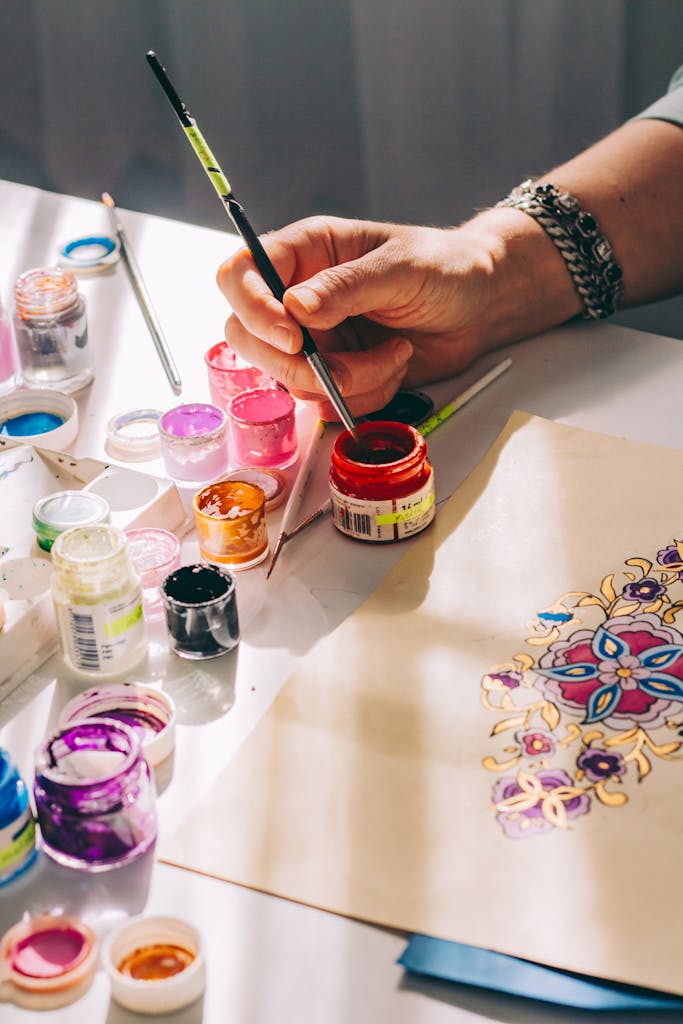
Price Point Analysis and Value Proposition
Let me share what I’ve learned about paint prices after years of teaching art and keeping track of school art supplies. You might be surprised by what I found out!
When I first started buying paint, I only looked at the price tag. Big mistake! Sure, professional paint costs about three times more than basic paint, but here’s the cool part – you don’t need to use nearly as much of it. Let me show you what I mean.
When it comes to blue paint, the basic option seems cheaper at $8 compared to the professional paint at $20. However, I learned in my art classes that you often need to use twice as much basic paint to achieve the same color. In the end, the pro-level paint isn’t that much more expensive when you consider how much more concentrated it is. Plus, basic paint is often full of fillers, like a bag of chips mostly filled with air. I’ve noticed a small tube of professional-quality paint can actually last longer than a larger tube of the basic stuff.
Want to know a money-saving trick? Use basic paint for practice or big background areas. But when you want your colors to really shine, use the pro-paint. I learned this the hard way when I had to redo a whole painting because the basic yellow paint looked dull and boring.
Here’s my favorite tip for buying paint without spending too much money: Start with just four tubes of fancy paint – red, blue, yellow, and white. Yes, it costs about $80, but you can mix these colors to make almost any other color you need! Plus, they’ll help you see why good paint is worth the money.
Remember, you don’t have to buy all your paint at once. Take your time and slowly replace your most-used colors with better quality ones. Keep track of which colors you use up first – those are the ones worth spending more money on. Your wallet and your art will both be happier this way!

Binder and Filler Differences
Let me tell you what I’ve learned about what’s inside different kinds of paint. After teaching art for many years, I’ve discovered some pretty cool things!
When making a peanut butter and jelly sandwich, think of the jelly as the paint color and the peanut butter as the glue that binds it. High-quality paint uses great glue, which keeps colors vibrant and clear, while basic paint doesn’t. I noticed this difference in my art class; the professional-level paint appeared crystal clear, while the basic paint looked cloudy.
Basic paint has some extra stuff in it too – kind of like adding water to juice to make it last longer. One day, my students and I did a fun test. We let both kinds of paint dry, then scraped them with a knife. The basic paint turned to powder, but the professional paint stayed strong and bendy!
Here’s something really neat about professional paint – it’s made special for each color. That’s right! The glue they use for pink paint might be different from the glue they use for white paint. Basic paint uses the same glue for all colors, like using the same sauce on all your food.
Want to know something else cool? High-quality paint feels smooth, like butter. Basic paint feels bouncy and weird. One of my students kept having trouble because her basic paint was jumping across her canvas! When she tried high-quality paint, that problem went away.
Basic paint also dries funny sometimes. One day, I was showing my class how to paint, and the basic paint dried way too fast. I had to start all over! Pro paint usually dries the same way every time, so you know what to expect.
Look at the paint when it’s dry, and you’ll see more differences. Professional paint that’s supposed to be shiny stays shiny. Pro-paint that’s supposed to be dull stays dull. But basic paint? It can end up looking weird, like it can’t make up its mind! I have paint samples on my classroom wall from three years ago. The pro-level paint still looks perfect, but the basic paint looks different now.
Remember, you can make great art with any kind of paint. But knowing these differences helps you choose the right paint for your artwork!

Color Range and Mixing Behavior
Let me share my exciting paint-mixing adventures with you! Even after teaching art for years, watching colors blend together still feels like magic.
Remember when you were a kid and mixed all your Play-Doh colors together? Well, paint can be like that too – but in a good way! One day in my art class, we did something really fun. We mixed yellow and blue paint to make green, but we used two different kinds: professional paint and regular student paint. The fancy paint made this super bright green that looked like it was glowing! But the regular paint? It made a dull, muddy green that looked kind of sad. My students couldn’t believe their eyes!
Here’s something interesting about high-quality paint: it comes in fewer colors than regular paint. Isn’t that surprising? There’s a good reason for this! High-quality paint uses pure colors that blend together in incredible ways. In my classroom, I have a chart showing how just 6 tubes of high-quality paint can create more colors than 24 tubes of regular paint. It’s like having a mini rainbow factory right in front of you!
And white paint? That’s another fun story. Premium white paint is super powerful – just a tiny dot makes other colors lighter while keeping them bright and cheerful. But regular white paint needs a lot more to work, and sometimes it makes colors look dull, like a foggy morning. I found this out when painting a sky one day. My beautiful blue turned into a weird, cloudy mess with the regular white paint!
Want to save money and have great colors? Just buy three tubes of paint: red, yellow, and blue. Mix them together, and you’ll get all the colors you want! It’s like cooking—simple ingredients often make the best dishes.
Painting brings joy through the experience of mixing colors on the palette, akin to being a color chef. The excitement of creating unexpected and beautiful new colors, often by chance, feels magical and reminiscent of opening a present, even after many years of painting.

Application and Performance Characteristics
Hey there! Let me tell you about what I’ve learned about different types of paint over my years of teaching art. It’s pretty amazing how different they can be!
One day, I did something really interesting with my class. We painted white paint over a black background using both professional paint and regular student paint. The professional paint covered the black smoothly with just two coats. But the regular paint? Oh boy – it took five tries, and you could still see spots of black peeking through! My students couldn’t believe what they were seeing.
The premium paint feels different too – it’s smooth and creamy, like spreading soft butter. When I first started using it, I actually used way too much because I was used to needing lots of regular paint. Just a tiny bit of the fancy paint went so far!
Here’s something cool about putting one color over another: The professional paint lets you make nice clean layers, like stacking pancakes. But with regular paint, it’s more like trying to stack wet pancakes – they kind of mush together and get messy.
Let me tell you about my favorite thing with pro-leve paint – mixing colors! I tried painting a sunset once with regular student paint. It was so frustrating, like trying to stir really thick pudding that just won’t mix right. But when I used the high quality paint? Oh wow! The colors flowed together as smooth as cream swirling in coffee. It was like the paint knew exactly what I wanted it to do!
In my classroom, I have paintings from five years ago. The ones made with regular paint are old and cracked, while the ones made with high-quality paint still look brand new. This shows how important it is to choose the right paint if you want your art to stay beautiful for a long time.
You don’t need to worry about using expensive paint to make great art. Just like some tools are better for certain jobs, there are different types of paint to fit your needs. Good paint can help you work better, just like a sharp knife is easier to use than a dull one. When your paint flows well, you can enjoy the fun of turning your ideas into beautiful artwork!

Final Thoughts
Let me share a helpful tip about choosing paint! Just like picking the right tools for any job, choosing paint depends on what you want to make and how much you want to spend.
Think of it like buying kitchen tools. Sometimes you need that professional non-stick pan for special dishes, but a regular pan works just fine for everyday cooking. Paint works the same way! The professional paint is amazing when you need super bright colors or want your art to last a long time. But regular student paint is perfect for learning and practicing.
Here’s what I tell my art students: Start by buying just a few tubes of the premium paint in colors you use all the time – maybe a bright blue or a sunny yellow. Then use the regular paint for big areas or when you’re trying new techniques. You know what’s cool? Many artists I know use both kinds in their paintings! They use the premium paint for the important parts and regular paint for the background.
Remember, great art can be made with any kind of paint. It’s not about having the most expensive supplies – it’s about choosing the right tools for your artistic adventure!
By Antonio Limongi MA EdS
Limongi, Owner of Antonio Limongi Fine Art LLC, is a Master Painter, Portrait Artist, and Art Instructor with 20 years of experience. He reports on issues in Fine Art Education, Creating Art, Investing in Art, and Selling Fine Art.
